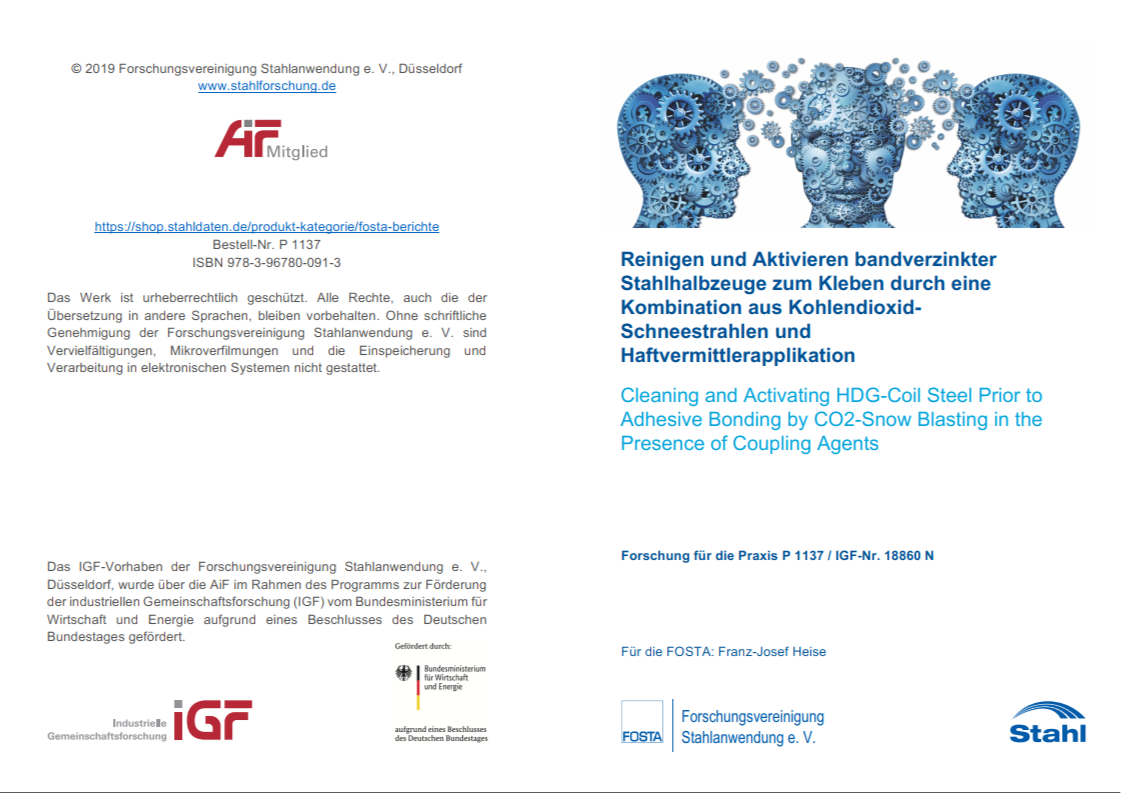Description
P 1137 – Cleaning and Activating HDG-Coil Steel Prior to Adhesive Bonding by CO2-Snow Blasting in the Presence of Coupling Agents
In the areas of vehicle construction, renewable energies and in the construction industry, economic and ecological considerations are increasingly leading to the desire for an efficient and economic method to adhesively bond continuously galvanized coilsteel components and to use the bonded joints without subsequent surface coatings. The challenge for adhesive bonding is to achieve durable adhesion on the surfaces intended for corrosion protection and contaminated due to handling and production while preventing bondline corrosion. Traditional pretreatment methods thereby involve the risk of damaging the thin zinc coating and thus reducing the corrosion-protective effect. Although the application of adhesion promoters offers the potential to enable chemical bonds for long-term adhesion, the additional process step represents an unacceptable technological and economic hurdle in many cases. On this basis, the suitability of the combination of CO2 snow jet blasting with simultaneous process-tolerant application of an adhesion promoter to a single-step process for the reliable pretreatment of continuously galvanized coil-steel was investigated. First, fundamental effects of the CO2 snow jet blasting and the manual application of an adhesion promoter were identified independently. From this, the combined single-stage pretreatment was validated. By correlating surface analytical characterizations with subsequent verification of the results by means of mechanical testing, a reliably controllable pretreatment process could be derived. For both, electrogalvanized (ZE) as well as hot-dip galvanized steel surfaces (Z, ZM), a consistent increase in strength and durability of bonds with room temperature curing adhesives could be obtained through the combined pretreatment process. Essential criteria to achieve those durable joints are the intensity of the carbon dioxide snow jet lasting process, which influences both, the cleaning performance and the physical activation of the surfaces, as well as the dosage of the bonding agent within simultaneous application.
The results of this research allow the provision of a fully automatable pretreatment process prior to adhesive bonding for continuously galvanized coil-steel without the need for expensive subsequent coatings at a cost that is also acceptable for SMEs and thus open up a broad field of industrial applications for the material steel. Especially with regards to process reliability, the combined pretreatment process proves thereby to be superior to traditional hand-guided processes. In addition, a practical guideline was developed which guides the implementation of the pretreatment process for the
respective application and moreover provides methods for process-oriented monitoring and control of the production of long-term resistant bondings.
Published in:
2019
Authors:
Univ.-Prof. Dr.-Ing. P. L. Geiß




